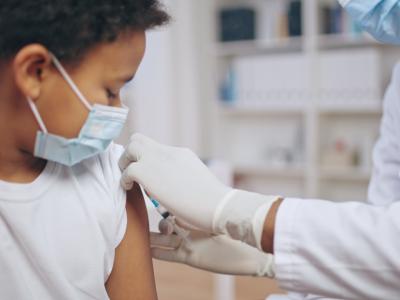Influenza activity is now widespread in 12 states across the country, and officials have confirmed a new case of variant H3N2 (H3N2v) flu, the Centers for Disease Control and Prevention (CDC) said today in its weekly update.
Other indicators are also up sharply, and officials noted a new pediatric death.
ILI visits also climb
Flu was widespread in 12 states, some of them in the Midwest and West for the first time this year, according to the CDC's FluView report covering the week ending Dec 9. During the week before, flu was widespread in only 7 states, 6 in the South plus Massachusetts. Today California, Wisconsin, Missouri, Ohio, New York, and Connecticut were added to the roster.
Twenty-six states and Puerto Rico reported regional activity, and 10 noted local flu activity.
The proportion of patients visiting outpatient clinics with influenza-like illness (ILI) symptoms is now 2.7%, well above the national baseline of 2.2% and up from 2.3% the week before. In addition, four states (Louisiana, Mississippi, South Carolina, and Texas) experienced high ILI activity, an increase in one from the week before. Five states experienced moderate ILI activity; New York City, Puerto Rico, and 16 states experienced low ILI activity; and 25 states experienced minimal ILI activity.
Flu activity is at or above region-specific baselines in 7 of 10 US regions.
Influenza A is still the dominant strain detected from specimens collected by US laboratories, with 82.2% of specimens collected last week being that type. Since Oct 1, 76.4% of all specimens tested have been influenza A.
Pediatric death, novel influenza A strain
The CDC also noted one human infection with a novel influenza A virus in Iowa. The patient was infected with H3N2v after coming into contact with swine. The patient was not hospitalized and is fully recovered.
This brings the total number of variant influenza cases to 67 for 2017, with 62 H3N2v cases, 4 H1N2v cases, and 1 H1N1v infection.
The pediatric death noted by the CDC was associated with an influenza A virus for which no subtyping was performed and occurred during the week ending Nov 4. That brings the total for the season to eight flu-related pediatric deaths.
So far, 1,232 laboratory-confirmed influenza-associated hospitalizations were reported from Oct 1 to Dec 9. The overall hospitalization rate was 4.3 per 100,000 population, up from 3.0 per 100,000 the week before. Adults over the age of 65 had the highest hospitalization rates (17.3 per 100,000 population), followed by adults aged 50 to 64 (4.5) and children aged 4 years and younger (3.5).
The vast majority of hospitalizations (87.4%) were associated with influenza A virus, 12.2% with influenza B virus, and 0.3% with influenza A virus and influenza B virus co-infection. Among those with influenza A subtype information, 87.0% were A(H3N2) and 42 (13.0%) were A(H1N1).
See also:
Dec 15 CDC FluView




















